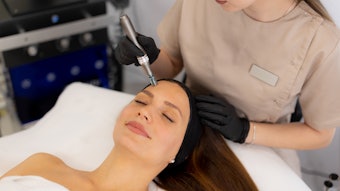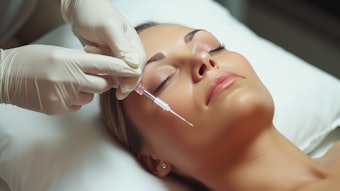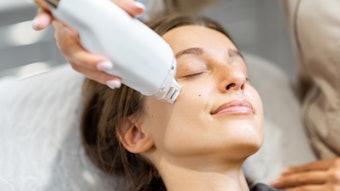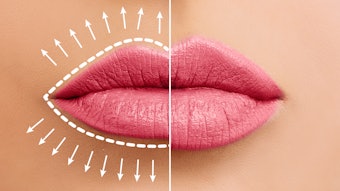
Few industries are growing faster than the medspa industry. Understandably, as its size and scope continue to increase, so too does the volume of expert advice available to the owners and operators of these fledgling businesses. Now, to be sure, some of the advice you’ll find is sound, pragmatic and actionable.
A good chunk of it, however, is better off ignored. That’s not to say this “bad” advice isn’t well-intentioned – it certainly is. But, given the relatively nascent state of the medspa industry, much of the advice you’ll find right now is gleaned from experiences running self-care businesses that are more mature – businesses such as hair salons, nail salons, barbershops and day spas. And while these adjacent businesses share many similarities with medspas, many longstanding best practices simply don’t translate.
Thus, it’s up to medspa owners and managers to comb through the noise to separate the good advice from the not-so-good. With that in mind, let’s identify some of the most common advice you’re better off ignoring and walk through what to do instead.
- Ignore: Invest heavily in marketing
- Instead: Invest thoughtfully in marketing
Yes, you need to market your medspa – I’m not about to tell you otherwise. But, don’t make the mistake of viewing marketing through the lens of budget and dollars. One of the most common questions I hear from medspa owners is, “Am I spending enough on marketing?” That’s the wrong question. If there was a one-to-one correlation between dollars spent and results achieved, marketing would be easy. But there isn’t, and it’s not.
Don’t worry about investing heavily in marketing, worry about investing thoughtfully. Worry about reaching clients how and where they want to be reached. Forget about things like print ads and spammy email campaigns. Focus instead on capturing online influencers (if you don’t know who those are, take the time to do the research), building a social media presence that shows rather than tells (before and afters are a great way to do this), and building hyper-targeted, super personalized email campaigns (ideally ones you can automate through the same client experience platform you use to book appointments and process payments).
Now, before we go any further, let me clarify: this doesn’t necessarily mean you shouldn’t invest heavily in marketing. If you are marketing thoughtfully, seeing results, and have the resources to do so, then by all means, pour more fuel on the fire. But, you should be guided by thoughtfulness rather than by an arbitrarily determined budget.
Related: Machines for the 4 Major MedSpa Targets
- Ignore: Hire the best practitioners possible
- Instead: Hire the best people possible
This is easier said than done because you can’t treat patients and operate successfully without experienced, qualified practitioners. Ultimately though, the success or failure of your medspa won’t come down to the quality of your treatments but the quality of your overall client experience. And people are at the core of any great client experience.
Building a staff that is friendly, welcoming, patient, and empathetic is far more important than building a staff that’s great at giving injections. You can teach the latter; you can’t teach the former. When interviewing and hiring, prioritize soft skills above all else. If you’re torn between a candidate with limited experience providing treatments but an incredible temperament and one with lots of experience but a personality that’s not conducive to creating a great client experience, go with the former every time.
- Ignore: Find the right price point
- Instead: Find the right value point
One of the (many) things that differentiate the medspa industry from others (including certain segments of the salon and spa industries) is that client behavior is seldom driven by price. Visiting a medspa is inherently an investment – in your health, your well-being, and in looking and feeling your best. Let’s face it, no one has to go to a medspa. If a client comes to your medspa, it’s because they want to be there. And when that’s the case, value trumps price every single time.
The modern medspa client isn’t concerned with spending less money for treatments. They’re concerned with getting the best value for their investment. They’d rather spend $500 on an incredible experience than $250 on a mediocre experience.
Notice I said experience and not treatment. At the risk of sounding like a broken record (but it’s that important), creating value is about the entire client experience, soup to nuts. From the minute a client tries to book an appointment online to the minute they walk out the door after checkout, everything that happens matters. Every aspect of the client experience that’s seamless creates more value; every hassle takes away from it.
- Ignore: Do whatever it takes to bring down your operating costs
- Instead: View your equipment and technology as investments, not costs
I’m not here to tell you that you shouldn’t keep your operating costs as low as possible; you should. What I am here to tell you is that, as a medspa owner, you should never do so at the expense of your technology and equipment. If there’s one thing medspas can learn from salons, spas, and other self-care businesses (aside from the lasting value of a great client experience), it’s that your technology and equipment are an investment, not a cost.
Software in particular has become the fulcrum point for booking appointments, communicating with clients via text, sending pre-appointment reminders, checking clients in and out, processing payments, and keeping on top of post-appointment follow-ups. That’s not the corner you want to cut.
The same is true of your large-scale investments in medical hardware. It’s one thing for self-care businesses to find ways to bring down the cost of things like hair care products, nail polish, razor blades, scissors, or anything else that can be purchased in bulk and or through creative partnerships. That’s simply not an option when it comes to some of the equipment required to run a medspa.
It may be more expensive upfront, but investing in high-quality machines and treatments will help you provide the kind of value and experience that keeps clients coming back. Don’t take shortcuts when it comes to your equipment – or you’ll pay the price later.
- Ignore: Reinvest all profits back into the business
- Instead: Build up a healthy financial cushion
Speaking of equipment, the dynamics of having expensive machinery that’s essential to running your business changes the financial equation for medspas in a way it doesn’t necessarily for other self-care businesses. If you need to replace a hair dryer or curling iron, no big deal. If you need to replace, repair, or temporarily rent a laser hair removal device that costs thousands of dollars, well, that’s quite a big deal. So, before you start aggressively reinvesting profits back into the business, make sure you have the cash reserves or lines of credit needed to weather the inevitable surprises that come with relying on complex and expensive machinery.
Unique industry, unique requirements
At the end of the day, all advice is just that: advice. Whatever best practices you do or don’t adopt, do so through the unique lens of your business. Remember, just like there’s no industry quite like the medspa industry, there’s no medspa quite like yours.
Skya Jones is a Medspa Education Manager and in-house aesthetics expert for Boulevard. She works directly with the company’s staff and medspa customers to help design memorable client experiences. Skya has more than seven years of experience in the beauty industry with a specific focus on medical aesthetics, as well as more than five years of experience in medspa leadership and management. Before joining Boulevard, Skya was a department lead for Bobbi Bullock Medical Esthetics. A certified nurse assistant, her career spans both clinical and business operations and includes stints as a manager at VitaNovu and a beauty advisor for Kohl’s. Skya’s go-to self-care routine is a relaxing facial or massage followed by meditation or yoga.










